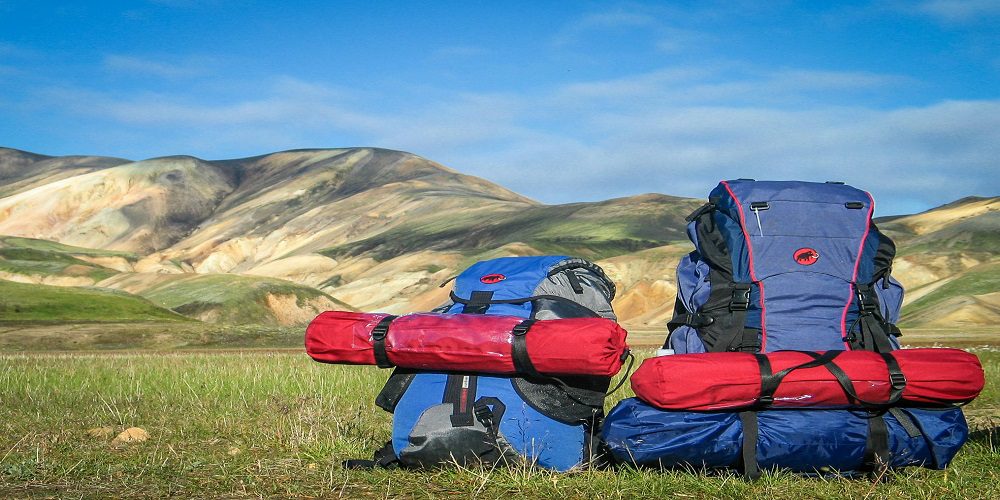Introduction
When it comes to choosing the perfect backpack, the options can be overwhelming. Whether you’re a seasoned traveler, a student, or an outdoor enthusiast, selecting the right type of backpack is crucial for comfort, functionality, and style. In this comprehensive guide, we’ll delve into the world of backpacks and explore the three main types that cater to different needs and preferences.
I. The Everyday Backpack
The everyday backpack, also known as the commuter or urban backpack, is designed for individuals who need a reliable and versatile companion for their day-to-day activities. This section will cover the key features of an everyday backpack, such as size, compartments, and materials. We’ll discuss how these backpacks are perfect for professionals, students, and anyone navigating the urban jungle.
1.1 Size and Capacity:
When selecting an everyday backpack, size plays a crucial role in ensuring functionality without compromising on style. The optimal size varies depending on individual preferences and requirements. For professionals heading to the office, a sleek and compact design that accommodates a laptop, notebook, and a few essentials might be ideal. On the other hand, students may opt for slightly larger backpacks to accommodate textbooks, notebooks, and a laptop.
Understanding the importance of choosing a backpack with the right capacity is essential. Too small, and you’ll find yourself struggling to fit in all your necessities; too large, and it might become cumbersome and uncomfortable for daily use. It’s all about striking the perfect balance based on your lifestyle and what you carry on a typical day.
To provide a practical perspective, consider popular everyday backpack sizes such as 15 liters, 20 liters, and 30 liters. A 15-liter backpack is excellent for minimalists who carry just the essentials, while a 30-liter backpack is suitable for those with a heavier load or specific requirements, such as gym gear or extra clothing.
1.2 Compartments and Organization:
One of the standout features of everyday backpacks is their emphasis on organization. The urban environment demands efficiency, and a well-organized backpack can significantly contribute to a seamless daily routine.
Compartments are strategically designed to cater to various items, from pens and keys to gadgets and water bottles. Inner pockets for laptops or tablets, designated areas for chargers, and external pockets for quick access to essentials like a metro card or wallet are common organizational features.
Consider backpacks with multiple compartments and pockets, as they allow for systematic arrangement and easy retrieval of items. Brands like Peak Design, Herschel, and Timbuk2 are renowned for their commitment to thoughtful organization in their everyday backpack designs.
1.3 Materials and Durability:
Durability is a non-negotiable factor when it comes to everyday backpacks. These backpacks are subjected to daily wear and tear, and investing in a well-constructed and durable material ensures longevity.
Common materials for everyday backpacks include nylon, polyester, and canvas. Each material has its own unique characteristics, offering a blend of water resistance, lightweight construction, and overall ruggedness. Additionally, the choice of materials extends to sustainability, with eco-friendly options becoming increasingly popular.
Nylon is known for its water-resistant properties and lightweight nature, making it an excellent choice for urban environments where unexpected rain showers are not uncommon. Polyester, on the other hand, is often chosen for its durability and resistance to abrasions. Canvas, while less water-resistant than nylon, provides a stylish and rugged aesthetic.
In their quest for sustainable options, brands like Patagonia and Fjällräven are incorporating recycled materials into their everyday backpack designs. This not only aligns with eco-conscious values but also contributes to reducing environmental impacts.
II. The Travel Backpack
For the avid traveler, a backpack is not just a functional accessory but a crucial companion that can make or break the journey. The travel backpack, designed to meet the demands of different travel scenarios, comes with a distinct set of features that cater to the needs of globetrotters and adventure seekers alike. Let’s explore the characteristics that set travel backpacks apart and make them an essential part of a traveler’s toolkit.
2.1 Size and Compatibility:
The size of a travel backpack is a critical consideration, especially in the context of airline travel. Many travelers opt for carry-on backpacks that adhere to airline regulations, allowing them to skip the hassle of checking in luggage and ensuring a smoother airport experience.
The ideal size of a travel backpack depends on the duration and nature of the trip. For short getaways, a compact 40–50-liter backpack may suffice, providing ample space for clothing, toiletries, and essentials. Longer journeys or those involving diverse climates might necessitate a larger 60-70-liter backpack, accommodating additional clothing layers and gear.
2.2 Security Features:
Traveling exposes individuals to various environments, and security becomes a paramount concern. Travel backpacks are equipped with an array of security features designed to safeguard valuables and provide peace of mind during journeys.
Anti-theft features are a common highlight in travel backpack design. These may include lockable zippers, concealed pockets, and cut-resistant straps. The importance of such features is amplified in crowded tourist areas and on public transportation, where pickpocketing is a potential risk.
2.3 Adaptability and Comfort:
Travel often involves a variety of scenarios, from navigating busy airports to exploring rugged landscapes. A travel backpack must be adaptable to different situations and provide comfort throughout the journey.
Adjustable straps, padded back panels, and ergonomic designs are key elements contributing to the comfort of a travel backpack. The ability to customize the fit ensures that the backpack sits comfortably on the traveler’s back, distributing weight evenly and reducing strain during extended wear.
Versatility in design is another crucial aspect. Some travel backpacks feature detachable daypacks, allowing travelers to separate essentials for shorter excursions without carrying the entire backpack. This flexibility is particularly beneficial for those who enjoy exploring cities or hiking trails while on the road.
III. The Outdoor Backpack
Nature enthusiasts, hikers, and adventurers require a backpack that goes beyond the standard features found in everyday or travel backpacks. The outdoor backpack, designed for rugged terrain and unpredictable weather conditions, is a specialized accessory that prioritizes durability, weight distribution, and functionality. Let’s delve into the unique features that define outdoor backpacks and make them essential for those who embrace the great outdoors.
3.1 Durability and Weather Resistance:
Outdoor backpacks are subjected to harsh conditions, including rough terrain, inclement weather, and exposure to the elements. Therefore, durability and weather resistance are paramount considerations in their design.
Materials like ripstop nylon, Cordura, and Dyneema are favored for their exceptional durability and resistance to abrasions. These materials provide a protective barrier against rocks, branches, and other potential sources of wear and tear encountered in outdoor environments.
Water resistance, or waterproofing, is another crucial aspect of outdoor backpack design. Backpacks with waterproof coatings or built-in rain covers shield the contents from rain, ensuring that valuable gear and equipment remain dry even in unpredictable weather conditions.
Brands like Arc’teryx, The North Face, and Black Diamond are renowned for their commitment to producing outdoor backpacks that withstand the rigors of nature while offering durability and weather protection.
3.2 Weight Distribution and Support:
When traversing challenging terrain, proper weight distribution is essential to prevent strain and discomfort. Outdoor backpacks are equipped with features that ensure the load is distributed evenly, reducing the risk of fatigue and potential injuries.
Hip belts, sternum straps, and load lifters are integral components of outdoor backpacks designed to enhance weight distribution and support. A well-fitted hip belt transfers a significant portion of the load to the hips, reducing strain on the shoulders and back. Sternum straps provide stability and prevent the shoulder straps from slipping, while load lifters allow users to fine-tune the weight distribution for optimal comfort.
The integration of a sturdy frame or frame sheet further contributes to the structural integrity of outdoor backpacks. Internal frames provide support and help maintain the backpack’s shape, especially when carrying heavy loads over extended periods.
3.3 Specialized Compartments and Attachments:
Outdoor enthusiasts often carry specialized gear and equipment, such as trekking poles, sleeping bags, and hydration systems. Outdoor backpacks are designed with dedicated compartments and attachment points to accommodate these items efficiently.
Compartments may include separate sleeping bag compartments, hydration reservoir sleeves, and gear loops for attaching trekking poles or ice axes. The accessibility and organization of these compartments contribute to the overall functionality of the outdoor backpack.
Attachment points, such as daisy chains and gear loops, provide additional options for securing external gear. This is particularly valuable for climbers and hikers who need to carry equipment like carabiners, ropes, or helmets.
Customization options are a key feature in outdoor backpacks, allowing users to adapt the backpack to their specific needs. Adjustable straps and modular designs provide flexibility for accommodating different gear configurations.
Conclusion
Understanding the three types of backpacks—everyday, travel, and outdoor—is crucial for making an informed decision based on your unique needs and preferences. Whether you’re navigating city streets, exploring new countries, or trekking through the wilderness, choosing the right backpack ensures a comfortable and organized experience. By considering the size, compartments, materials, and special features of each type, you can confidently select a backpack that suits your lifestyle.



































